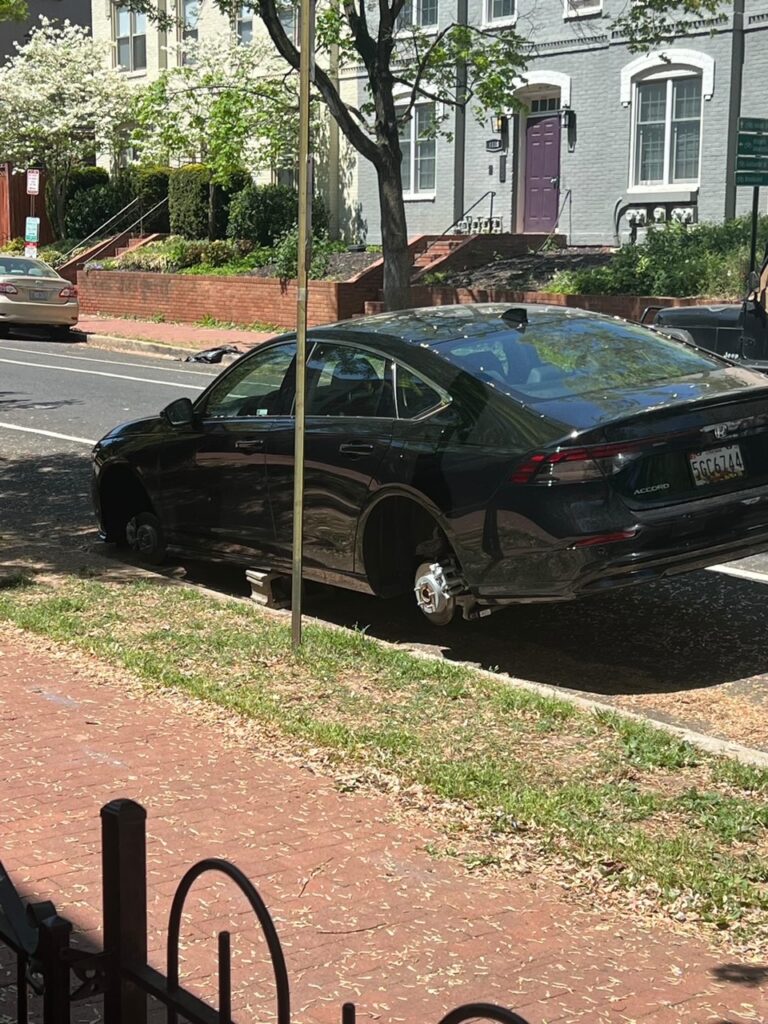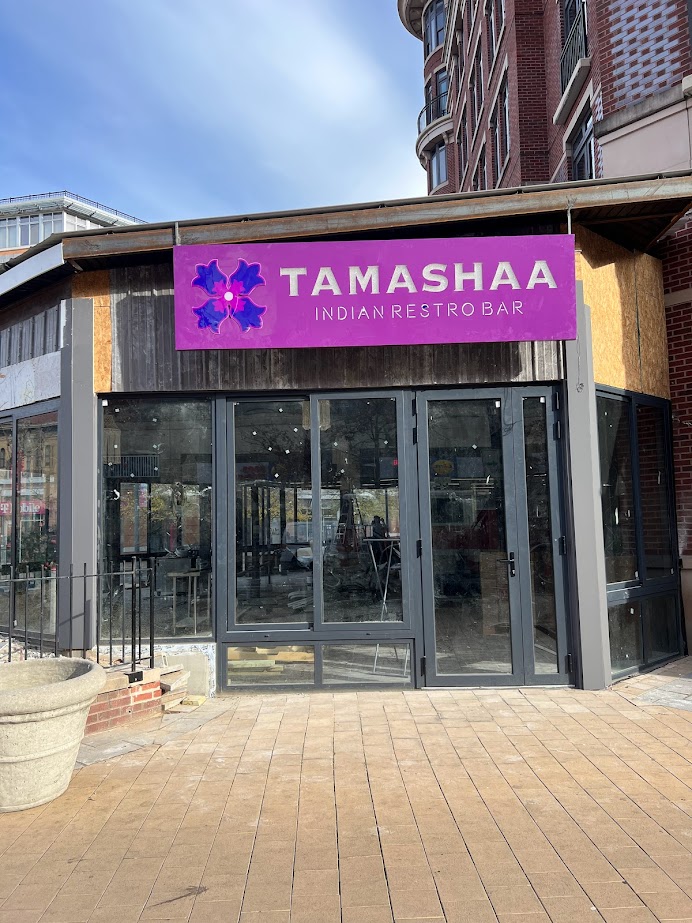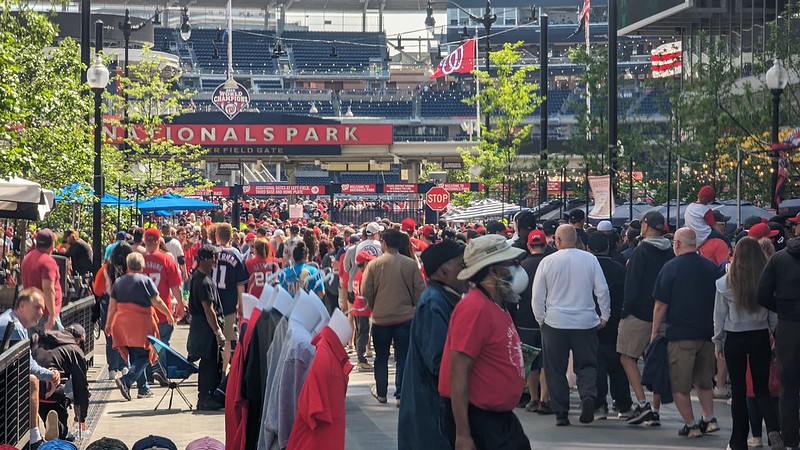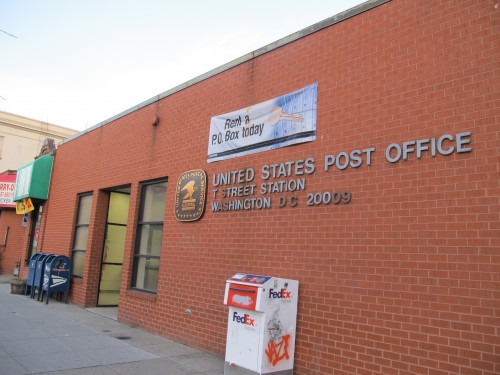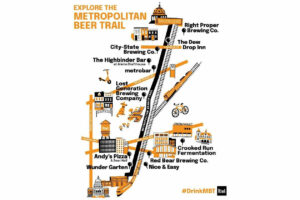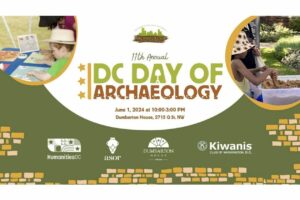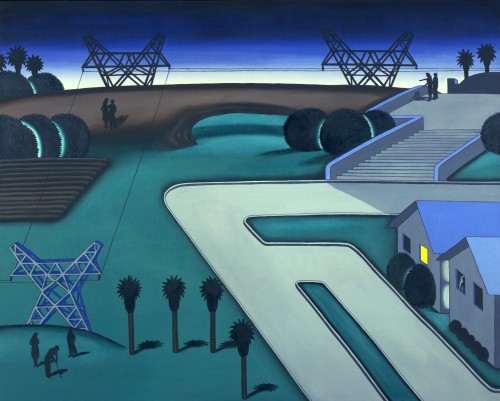
Roger Brown, Natural Bridge, 1971, oil, Smithsonian American Art Museum, Gift of the S.W. and B.M. Koffler Foundation.
As I toured the new exhibition of Chicago art at the Smithsonian American Art Museum, our own city’s modern art legacy was what first came to mind. That legacy tends to revolve around the Washington Color School of the 1960s. Whether you love them or hate them, the color field painters that populate local museums succeeded in engaging with the postwar behemoth of Abstract Expressionism. They didn’t so much pioneer a Washington movement as they did push the boundaries of one born in New York. What is most satisfying about Made in Chicago: The Koffler Collection is the extent to which its artists flout such linearity.
The exhibition is inconspicuous, taking up three small galleries at the south end of the museum’s second floor. Its namesakes are Samuel and Blanche Koffler, Chicago collectors whose foundation donated a portion of their contemporary holdings to the Smithsonian in 1979, back when SAAM was known as the National Collection of Fine Arts. While the majority of the 26 works are paintings from 1960 to 1980, they are wildly different — both from one another and from the kind of abstraction being churned out elsewhere in the United States at the time.
This is in part thanks to Chicago artists’ affinity for experimental art brut that simultaneously draws on art history and snubs it. Half a century ago, such artists formed informal groups with awesomely ’60s-tinged names like “The Hairy Who” and “The Non-Plussed Some” and championed various brands of representational art that were unrestrained by the heavy theory of painterly abstraction. Several of the artists on view shared an interest in popular culture and graphic arts. Others were influenced by the abundance of Surrealist works in Chicago collections.
Continues after the jump.
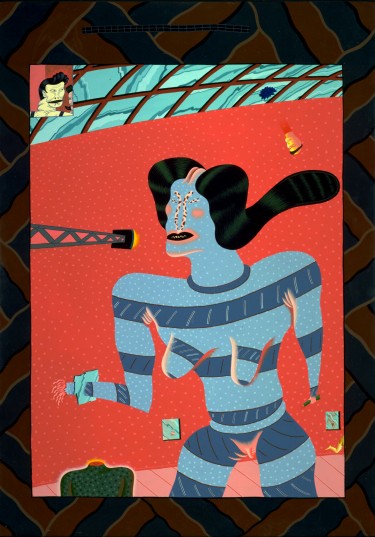
Jim Nutt, It’s a Long Way Down, 1971, acrylic on wood, Smithsonian American Art Museum, Gift of the S.W. and B.M. Koffler Foundation.
Surrealism as a source is prominent in the first two galleries, where subjects include dreamscapes and uncanny still lifes, like Ed Paschke’s bulging, fetishistic “Shoe Sack.” And then there are the psychedelic she-monsters of Karl Wirsum’s “Lip Balm” and Jim Nutt’s “It’s a Long Way Down,” the latter a nightmarish scene of colorful, patterned humanoids composed like a comic strip panel. Each of these artists employs a cartoonish aesthetic that evokes both pop culture and counterculture. Others, like Seymour Rosofsky, depict their fantasies through academic technique and classical references.
In the last gallery, figuration dissolves into an erratic set of eight abstract and semi-abstract paintings and sculptures. It’s almost as if you’re standing in the center of a Venn diagram of Chicago experimentation vs. Abstract Expressionist convention. Few consider paint and canvas the ultimate subjects in the way that color field art did. Miyoko Ito’s ambiguous figures built out of geometric forms in muted colors challenge the viewer to unlock a narrative. “Partial Evidences II” by Ray Yoshida, a Hawaiian artist and mentor to some of the other artists on view, is an organized grid of organic forms, “evidences” that inspire an infinite number of associations.
The works that do ultimately echo New York taste are those by Vera Klement and Joseph Goto: her painting is divided into fields of fluctuating color reminiscent of a Rothko, and his welded steel sculpture instantly recalls David Smith’s experiments with three-dimensional geometry. The problem with displaying only one object per artist is that there’s no way to get a sense of whether these are representative of their bodies of work.
Still, the cross-section on display here is a useful one — in particular for those who create or look at contemporary art. It marks a resurgence of figuration that branched out into the infinite kinds of art-making that we see in local galleries. Washington can be proud of its contribution to the art historical canon, but its art that eludes the canon is equally worth celebrating.
Made in Chicago was guest curated by Franz Schulze, a Chicago art critic, and organized by chief curator George Gurney. It is on view at the Smithsonian American Art Museum until Jan. 2. Metro: Gallery Place-Chinatown or Metro Center.
Recent Stories
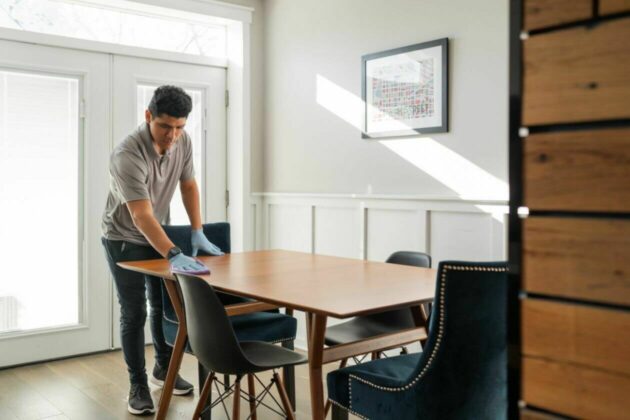
For many remote workers, a messy home is distracting.
You’re getting pulled into meetings, and your unread emails keep ticking up. But you can’t focus because pet hair tumbleweeds keep floating across the floor, your desk has a fine layer of dust and you keep your video off in meetings so no one sees the chaos behind you.
It’s no secret a dirty home is distracting and even adds stress to your life. And who has the energy to clean after work? That’s why it’s smart to enlist the help of professionals, like Well-Paid Maids.

Unlock Peace of Mind for Your Family! Join our FREE Estate Planning Webinar for Parents.
🗓️ Date: April 25, 2024
🕗 Time: 8:00 p.m.
Metropolitan Beer Trail Passport
The Metropolitan Beer Trail free passport links 11 of Washington, DC’s most popular local craft breweries and bars. Starting on April 27 – December 31, 2024, Metropolitan Beer Trail passport holders will earn 100 points when checking in at the
DC Day of Archaeology Festival
The annual DC Day of Archaeology Festival gathers archaeologists from Washington, DC, Maryland, and Virginia together to talk about our local history and heritage. Talk to archaeologists in person and learn more about archaeological science and the past of our


